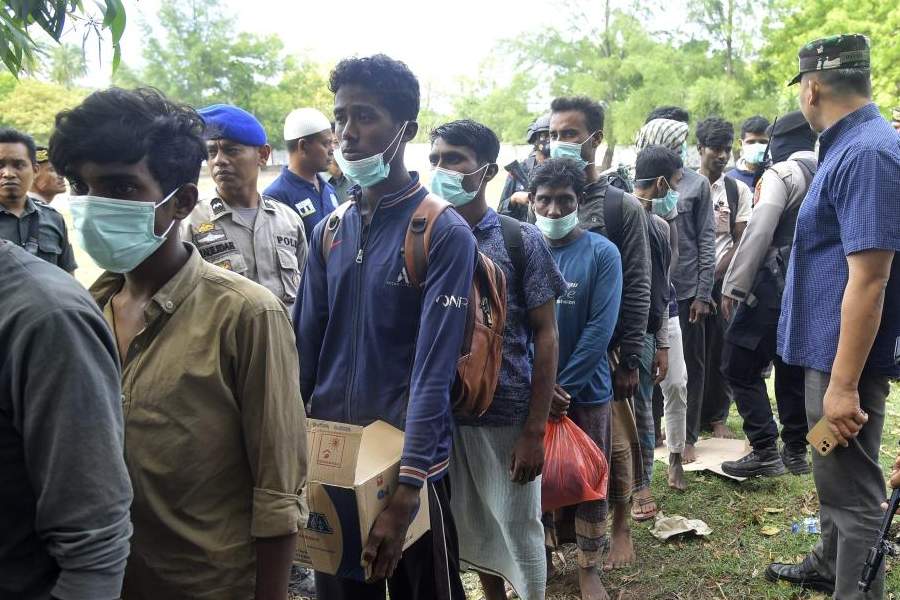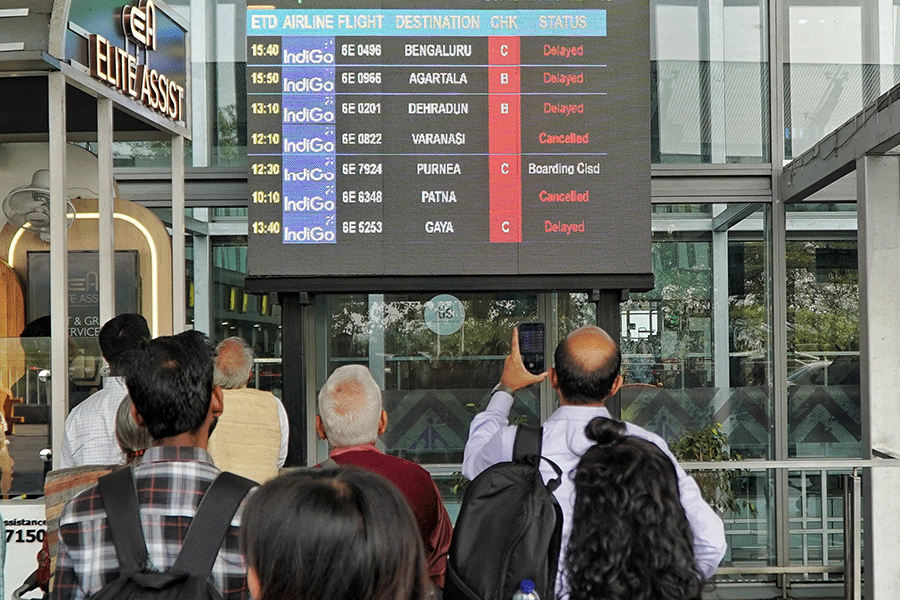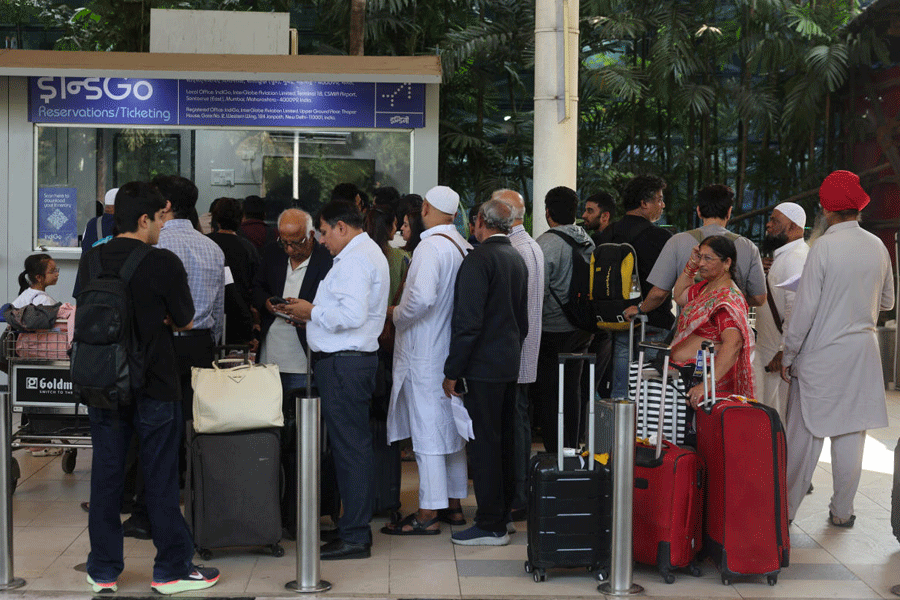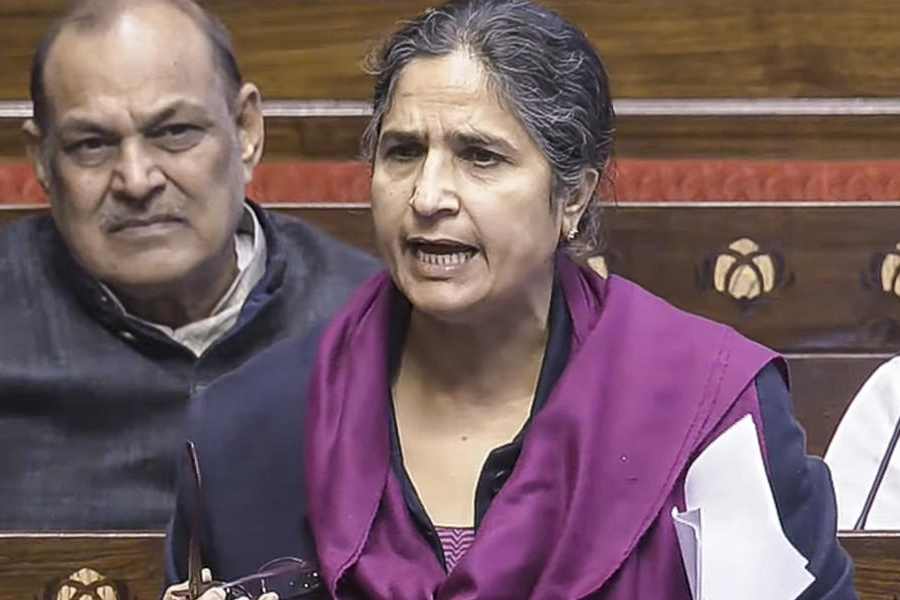|
|
The televised debates at the Calcutta Club and Jantar Mantar about the campaign for the jan lok pal bill might not have changed many minds but they did tell us a great deal about the campaign’s agenda, the disagreements among the principal characters in this drama and the cumulative impact of Anna Hazare’s movement.
The debates made it clear that for Team Anna the jan lok pal bill is just the first part of a larger project: the overhaul of governance in India. A recurring theme in the arguments made by Arvind Kejriwal and Anna Hazare was the need to bring the elected representatives of India’s democracy to heel. In Kejriwal’s ponderous formulation, democracy in India was no longer of the People, by the People, for the People, but of the High Command, by the High Command, for the High Command. The problem with members of parliament and members of the legislative assemblies was that they took their orders from party bosses instead of attending to the wishes of their constituents.
Hazare went further in his closing peroration at Jantar Mantar. Parliament was merely one of many “sansads” or democratic assemblies. State legislatures were “sansads” at a provincial level, while the ultimate source of democratic authority, the ur-assembly, as it were, was the village community.
The paraphernalia of parliamentary democracy, he said, was necessary because of India’s size and scale, but it is fair to say that Hazare sees representative democracy as a second-best alternative to direct, participatory democracy. He also sees elected politicians as errant servants of the People, who have forgotten (or are chronically in the process of forgetting) the wishes of the constituents whom they represent.
The easy critique of this position is that it’s naïve, even dangerous, because the prescriptions of participatory democracy can’t be scaled up to govern a country the size of India, that the mobilized street can’t be substituted for the necessarily complex constitutional structures that embody the popular will in a large country.
While this is true, it doesn’t add up to a persuasive case against Messrs Hazare, Kejriwal and Prashant Bhushan, because while they rhetorically berate corrupt elected politicians, they don’t repudiate the institutions of constitutional democracy: they offer, instead, detailed prospectuses for reforming them.
In his Jantar Mantar speech, for example, Hazare proposed, in a long digression, his solution to the problem of criminals being elected to Parliament and provincial legislatures. The wicked, he said, were elected because electors were forced to choose from a slate of bad characters.
If voters were given the right to reject all the candidates on the ballot, and if these rejections made up a certain percentage of the total votes polled, the election ought to be annulled and a new one conducted. What’s more, all the rejected candidates ought to be barred from contesting again; this would teach political parties to field virtuous candidates instead of thugs.
Critics might find the suggestions made by Hazare and his lieutenants unworkable or deluded, but Team Anna can’t be accused of not offering concrete ways of reforming what it sees as corrupt or debauched governance. Nor can its critique of the actually existing democracy be summarily dismissed, if only because it seems to resonate with large numbers of people who turn out to be counted.
To illustrate his point about elected representatives getting above themselves, Hazare cited the way in which Central and state governments indiscriminately acquired rural land without consulting the affected village communities. In the light of recent conflicts and controversies, it is hard to think of any critic from the Right or Left who would defend the Indian State’s unjust and often corrupt use of eminent domain powers.
Despite the fact that Anna Hazare, Arvind Kejriwal, Prashant Bhushan and Kiran Bedi seem at various times to be eccentric, hectoring, pious, self-righteous, reactionary and complicit with shady godmen, there’s little doubt that so far they have won the rhetorical battle against the United Progressive Alliance government, their ‘civil society’ critics and other appalled pundits and commentators.
It’s obvious to even a casual spectator that one reason for the success of Kejriwal & Co. is that they work harder than their opponents do. They have made all the running in the arguments about the scope and extent of the lok pal legislation. When Kejriwal and Bedi say in virtual chorus that ‘the devil is in the details’ you know that they have rehearsed this argument, but you also know that this isn’t an empty flourish: they really do have all the details that they think are vital to the bill, listed and ready to hand, and they need no encouragement to tell you why they’re so important.
The National Campaign for People’s Right to Information has been critical of the jan lok pal bill and its authors, and the quarrel between Kejriwal on the one side, and NCPRI activists like Aruna Roy, Nikhil De and Shekhar Singh on the other, has been sharpened by the fact that Kejriwal was once a colleague.
UPA critics of the jan lok pal bill have sometimes cited the NCPRI’s criticisms of it to argue that Kejriwal’s organization, India Against Corruption, ought not to be seen as the sole or authoritative voice of ‘civil society’ on this issue. During the Calcutta Club debate, when Shekhar Singh outlined some of these differences on behalf of the NCPRI, Kejriwal scornfully reminded the audience that the NCPRI still hadn’t produced an alternative lok pal bill, that its representatives kept recycling a set of talking points.
The NCPRI might well believe that the task of drafting the bill is Parliament’s business, that the job of a civil society group is to emphasize key principles. This is not an unreasonable position, but nine months after Anna’s first fast in Jantar Mantar, for Kejriwal to be able to make this point, unrebutted, was a debating disaster for the NCPRI.
Kejriwal’s implicit critique of the NCPRI is that its leading lights have been co-opted by the State. Their proximity to institutions like the National Advisory Council is offered as evidence of this co-option. Given their record of service and distinction, this is an unfair insinuation but at the Calcutta Club debate, Shekhar Singh, instead of correcting this impression, seemed to consolidate it.
The difference, he argued, between the IAC’s methods and the NCPRI’s was that the former believed in confrontation while the latter worked through persuasion. The Right to Information Act, he argued, was achieved through such persuasion. The NCPRI’s way was to work with reasonable, like-minded members of the political class to achieve its ends.
Put like this, the split in ‘civil society’ began to seem like the rift in the Congress in its early years between Moderates and Extremists. Whatever the merits of the Moderate position, to suggest, in a debate about means and ends, that cooperating with an unpopular political establishment is better than confronting it, was to lose the public argument. It set up an unflattering contrast between a crusading Team Anna and a domesticated NCPRI.
The subsequent ‘debate’ at Jantar Mantar was actually an inspired piece of political theatre. The fact that representatives of the principal Opposition parties turned up to sunbathe in Anna’s aura and to vie with each other to underline their agreement with the main elements of the jan lok pal bill was, in itself, a coup. Once Arun Jaitley, A.B. Bardhan, Pinaki Mishra, Brinda Karat and Sharad Yadav had had their say, Kejriwal stepped up to make it clear that this wasn’t a debate about the jan lok pal bill, it was a tutorial supervision.
Kejriwal was the supervisor, the assembled pols were his pupils and he took them line by line through the details of the lesson he wanted them to learn. Short of saying “Repeat after me”, he did everything else he could to put them on notice: this was the bill Team Anna wanted, and this was the bill the Opposition had to deliver. He even asked them to state their stand on each element of the bill… at which they gently demurred. But Kejriwal had achieved his object: the Opposition had lined up in Anna’s durbar to genuflect. Members of parliament were falling over themselves to please a People conjured up by Anna: it was obvious to the most casual spectator that these politicians weren’t taking Them (or Us) for granted.
Kejriwal’s genius for mobilization and Anna’s scary willingness to die for his cause seem to have created an irresistible force and Parliament is turning out to be rather less than an immovable object. Apart from a reservation or two about the status of the Central Bureau of Investigation, the Opposition is now publicly committed to every major provision of the jan lok pal bill.
And though some representatives of the ruling coalition continue to assert the prerogatives of Parliament, there’s little in the recent past to suggest that the UPA’s ministers have the stomach for a fight. Hazare has seen them off once and if he were to commence his fast on the 27th of this month to protest against the government’s bill, it’s hard to see Manmohan Singh and P. Chidambaram sticking to their guns and daring him to die.
So it won’t come to that. The government’s bill will be the jan lok pal bill in every important detail. Rumours already swirl that the ruling dispensation will agree to place the prime minister and Class C and D employees within the lok pal’s jurisdiction. The subordination of the CBI to this super ombudsman seems to be the sticking point and here too the government will find a form of words to which it can surrender. This will be both an utter rout and a famous victory.












